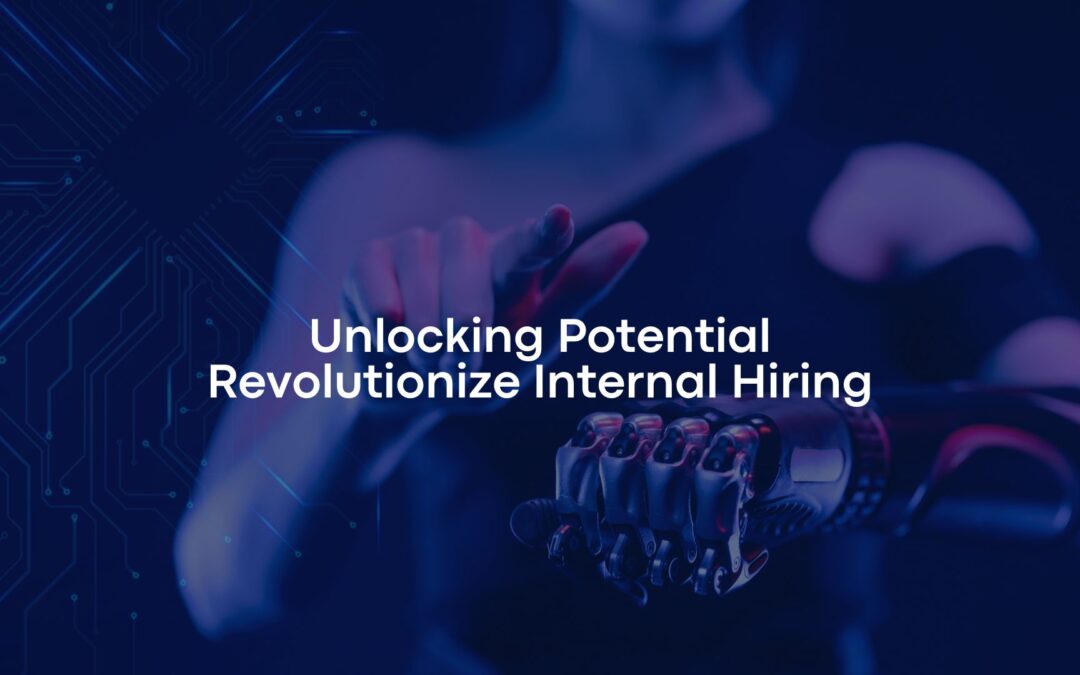In today’s fast-paced, ever-changing business environment, securing top leadership talent is critical for driving organizational success. However, traditional executive recruitment is often a lengthy, complex process, which can hinder a company’s ability to stay agile and competitive. From finding the right candidate to ensuring cultural fit and alignment with organizational values, recruiting for leadership roles demands time and precision.
Thankfully, advancements in artificial intelligence (AI) are revolutionizing executive recruitment, enabling companies to find, evaluate, and hire top leadership talent faster and more effectively than ever before. In this article, we will explore how AI is transforming executive recruitment, helping organizations streamline the hiring process while improving the quality of their leadership hires.
1. The Challenges of Executive Recruitment
Recruiting for executive positions has always been a challenge for HR professionals and talent acquisition managers. These roles are not just about technical expertise; they require a candidate with the right mix of leadership, strategic thinking, cultural alignment, and soft skills that are often difficult to assess.
a- Time-Intensive Processes: Executive recruitment typically involves multiple rounds of interviews, reference checks, assessments, and discussions. These steps, while necessary, often result in delays that can take weeks or even months to finalize a hire. In many cases, this extended timeline can lead to lost opportunities, as top candidates may accept competing offers in the meantime.
b- Cultural Fit and Leadership Style: Finding an executive who not only has the necessary skills and experience but also aligns with a company’s culture and leadership style is paramount. This cultural alignment is often the deciding factor in whether a leader will be successful within the organization. Traditional recruitment processes rely on subjective interviews and references, which may not always paint a complete picture of a candidate’s fit.
c- Global Search for Talent: For many organizations, the search for top leadership talent is not limited to a single geographic area. Companies often look for candidates from across the globe, which can complicate the recruitment process further. Scheduling interviews, managing time zone differences, and ensuring an efficient evaluation process becomes increasingly difficult on an international scale.
2- How AI is Transforming Executive Recruitment
Artificial intelligence offers a powerful solution to many of the challenges inherent in executive recruitment. By leveraging AI-powered tools like those provided by Intervu.ai, companies can streamline the recruitment process, reducing time-to-hire while improving the accuracy of candidate assessments.
a- AI-Assisted Screening and Shortlisting: One of AI’s most significant contributions to executive recruitment is the ability to rapidly screen and shortlist candidates. AI can analyze vast amounts of data from resumes, professional profiles, and other relevant sources to identify candidates who meet the necessary qualifications. This allows talent acquisition managers to focus their time on evaluating the most promising candidates rather than manually sifting through resumes.
Moreover, AI can evaluate leadership competencies, assessing traits such as decision-making ability, communication skills, and strategic thinking. These insights can help HR professionals and talent acquisition teams identify candidates who are not only qualified but also capable of leading at the executive level.
b- Soft Skill Assessment: Soft skills like leadership, communication, and emotional intelligence are critical for executive roles. However, they are often difficult to evaluate through traditional resumes and interviews. AI-powered video interviews, like those offered by Intervu.ai, can assess these skills more objectively by analyzing facial expressions, speech patterns, and other non-verbal cues.
Through these advanced AI tools, companies can gain deeper insights into how a candidate might perform in high-pressure situations, how they communicate with their teams, and whether their leadership style aligns with the company’s needs. This data-driven approach allows HR professionals and C-suite executives to make more informed hiring decisions.
c- Data-Driven Decision Making: AI-driven recruitment tools provide actionable data that helps organizations make smarter decisions during the hiring process. For example, AI can analyze a candidate’s past performance, career trajectory, and potential leadership impact to predict their long-term success within the organization.
These insights allow talent acquisition managers and HR teams to prioritize candidates who are not only the best fit for the current role but also show potential for future leadership positions. Predictive analytics help companies build a leadership pipeline that ensures sustained growth and organizational resilience.
3- Speeding Up the Recruitment Process
One of the most significant advantages AI brings to executive recruitment is its ability to accelerate the entire process. Time-to-hire is a critical metric for HR professionals and C-suite executives alike, as long hiring cycles can lead to missed opportunities and higher costs.
a- Faster Screening: AI-powered tools can automate the initial stages of candidate screening by quickly parsing resumes, analyzing profiles, and matching candidates to job descriptions. This drastically reduces the time spent on manual resume reviews, allowing talent acquisition managers to focus on the candidates who are most likely to succeed in executive roles.
b- Automated Interview Scheduling: Executive recruitment often involves coordinating multiple rounds of interviews with senior leadership, board members, and key stakeholders. Scheduling these interviews across different time zones and ensuring everyone’s availability can be a logistical challenge. AI tools can automate the scheduling process, ensuring interviews are set up efficiently and without the need for back-and-forth communication.
c- Real-Time Feedback and Analytics: After each interview, AI can provide real-time feedback and analytics, helping HR teams and C-suite executives evaluate candidates quickly. This eliminates the need to wait for lengthy post-interview discussions and debriefs, allowing decisions to be made faster and with greater confidence.
4- Improving Quality of Hires
Beyond speeding up the recruitment process, AI also enhances the quality of executive hires. By providing a more objective, data-driven approach to recruitment, AI helps companies reduce bias, improve cultural fit, and predict leadership potential.
a- Eliminating Bias: Unconscious bias is a challenge in every recruitment process, particularly at the executive level, where decisions can have long-lasting effects on the organization. AI can help reduce bias by focusing on data-driven assessments rather than subjective evaluations. By evaluating candidates based on their skills, experience, and potential, AI ensures a more fair and equitable hiring process.
b- Ensuring Cultural Fit: AI tools can assess whether a candidate’s leadership style aligns with the company’s culture and values. Through behavioral assessments and data analysis, AI can provide insights into how a candidate might interact with their teams, make decisions, and lead the organization. This helps HR professionals and talent acquisition managers ensure they are hiring leaders who will integrate well within the company’s existing culture.
c- Leadership Potential Evaluation: One of the most valuable contributions AI offers is its ability to evaluate a candidate’s long-term leadership potential. By analyzing a candidate’s past performance, leadership style, and career trajectory, AI can predict how well they will perform in the executive role and whether they have the potential to grow into even more significant leadership positions in the future.
5- How Critical It Is to Choose the Right Executive for a Company
Executive leadership plays a pivotal role in shaping the direction, culture, and success of an organization. A strong executive not only drives strategic decisions but also influences company morale, innovation, and long-term growth. Hiring the wrong executive, however, can have far-reaching negative consequences—affecting everything from team dynamics to overall business performance.
a- Impact on Company Culture and Morale: An executive sets the tone for the company’s culture and values. Their leadership style can either foster an environment of collaboration and innovation or create tension and disengagement. A misaligned leader can demotivate teams, leading to higher turnover rates, decreased employee engagement, and a fractured organizational culture.
b- Strategic Decision-Making and Innovation: Executives are responsible for making high-stakes decisions that shape the future of the business. An ineffective executive may struggle to align with the company’s vision or fail to lead the company through challenges, resulting in missed opportunities and stagnation. On the other hand, the right executive can steer the company toward innovation, identify new market opportunities, and drive strategic initiatives that foster growth.
c- Long-Term Business Performance: The wrong hire at the executive level can lead to costly mistakes, not just financially but in terms of lost momentum and direction. Whether it’s mishandling resources, poor strategic planning, or failing to adapt to market changes, an executive misstep can significantly damage a company’s performance. This is why companies must carefully assess candidates’ leadership potential, decision-making abilities, and cultural fit before making a hire.
d- The Cost of a Wrong Hire: Hiring a misfit executive can cost an organization not only in recruitment fees but also in lost time and missed opportunities. According to research, replacing an executive can cost up to three times their salary when factoring in hiring, onboarding, and the disruption caused by their departure. The reputational damage of constant executive turnover can also weaken a company’s standing in the marketplace.
Choosing the right executive isn’t just about filling a vacancy; it’s about ensuring long-term stability and growth. Leveraging AI to assess candidates thoroughly—evaluating not only their skills and experience but also their cultural fit and leadership style—helps ensure that companies make the right choice when it comes to leadership hires.
6- The Future of Executive Recruitment with AI
As AI continues to evolve, its role in executive recruitment will only become more significant. AI-driven tools will offer even more sophisticated assessments of leadership potential, enabling companies to build stronger, more resilient leadership teams. C-suite executives and HR professionals who embrace AI in their recruitment processes will gain a strategic advantage, ensuring they can attract and retain top leadership talent in an increasingly competitive market.
Conclusion
AI is transforming the executive recruitment landscape by making the process faster, more efficient, and more data-driven. From automating candidate screening to providing real-time analytics, AI offers solutions to many of the challenges that have traditionally slowed down executive hiring. Companies that adopt AI-powered tools like Intervu.ai will not only reduce time-to-hire but also improve the quality of their leadership hires, ensuring long-term success and organizational growth.
If you’re looking to streamline your executive recruitment process and secure top leadership talent faster, it’s time to embrace AI. Start today by integrating AI-powered recruitment solutions like Intervu.ai into your hiring strategy and experience the future of executive recruitment.






